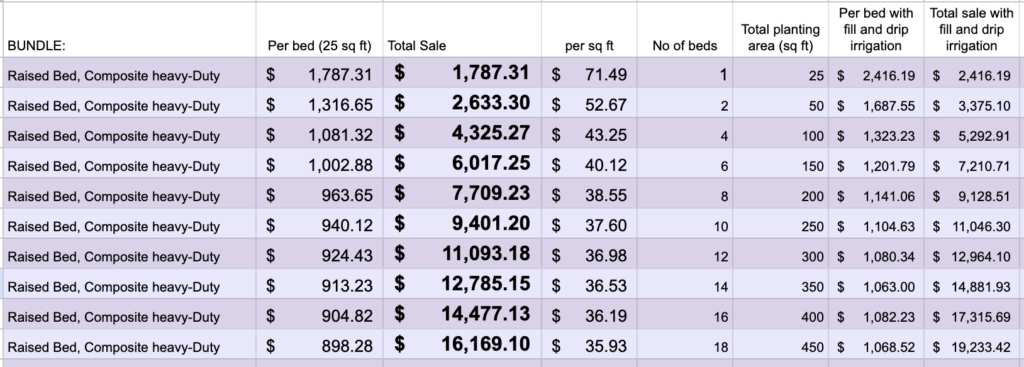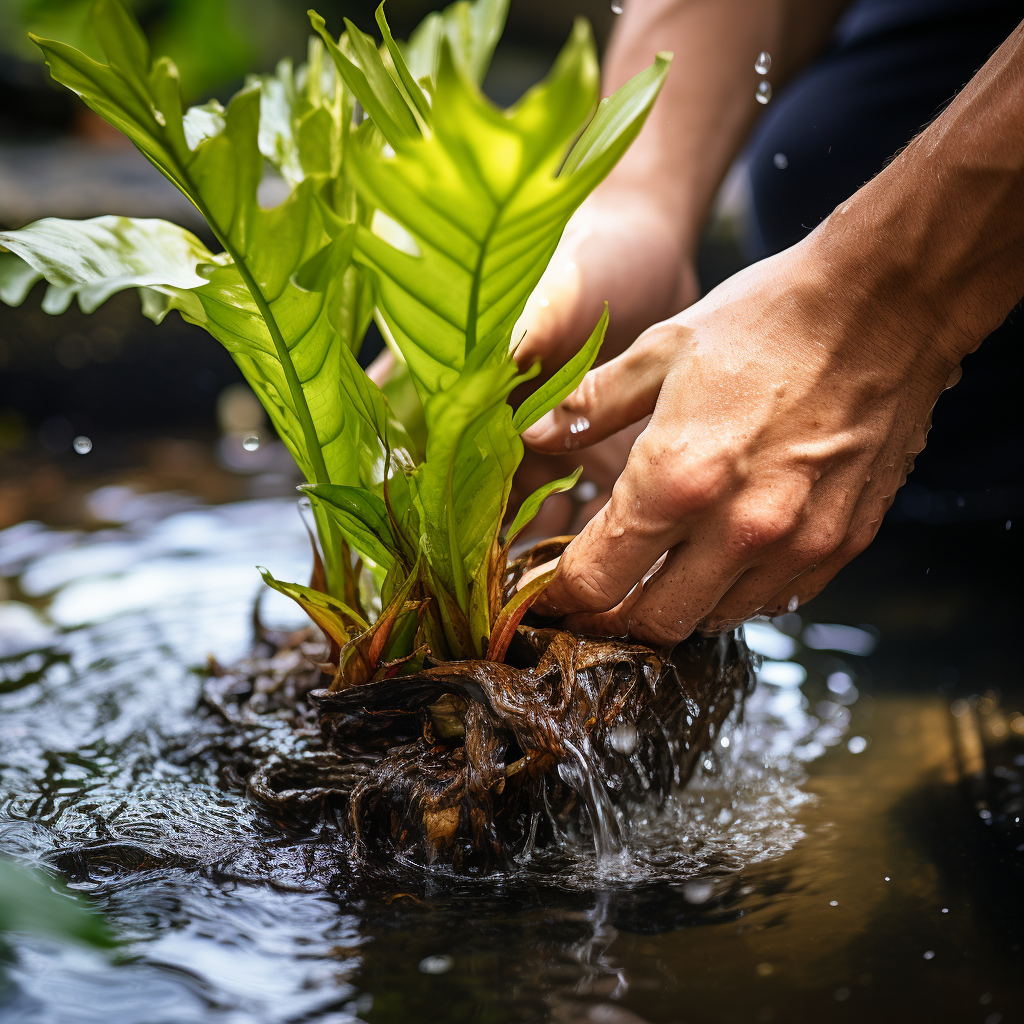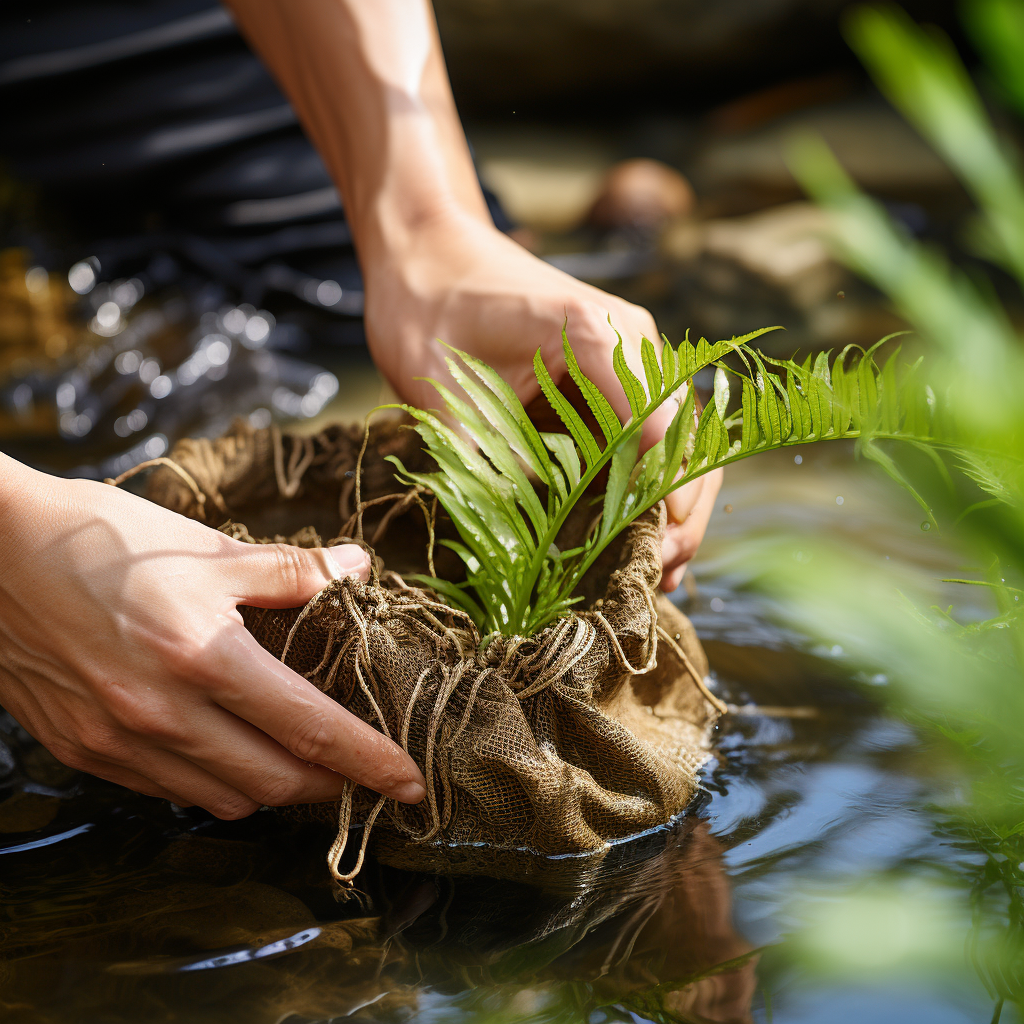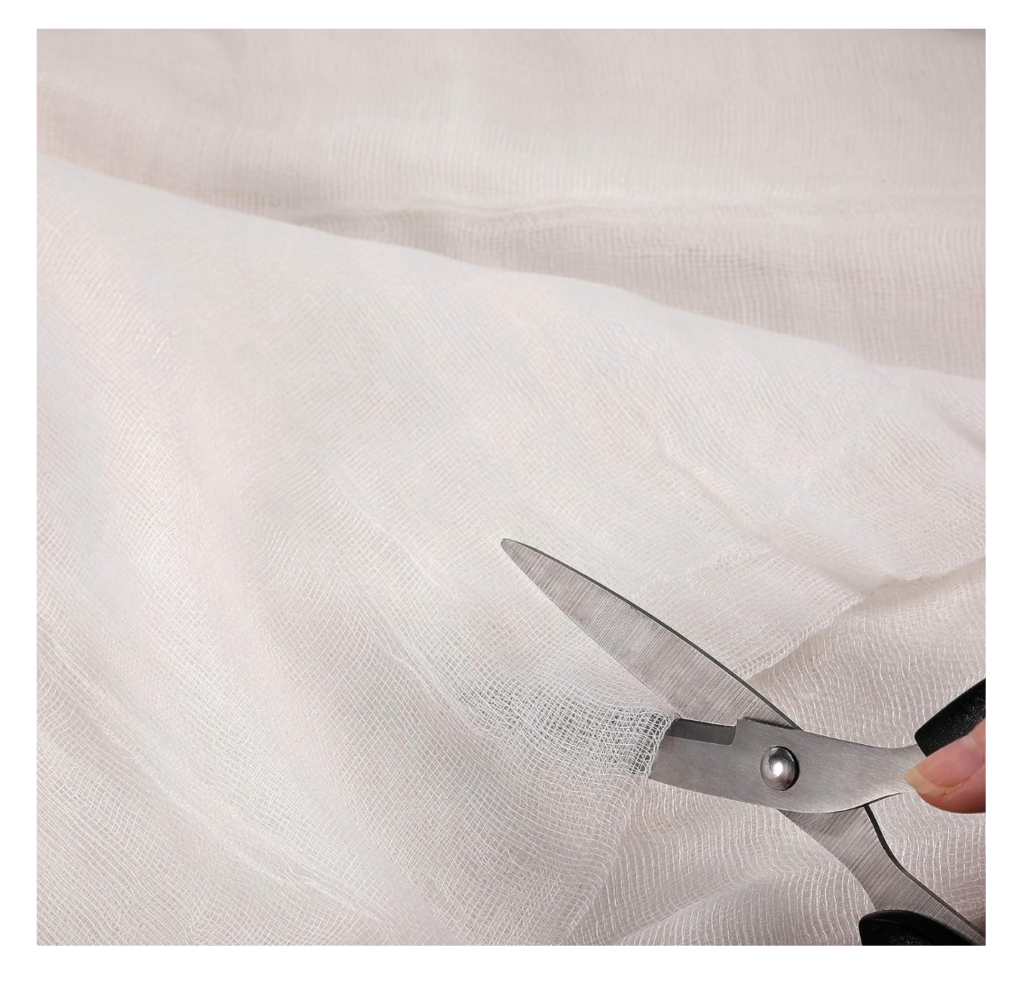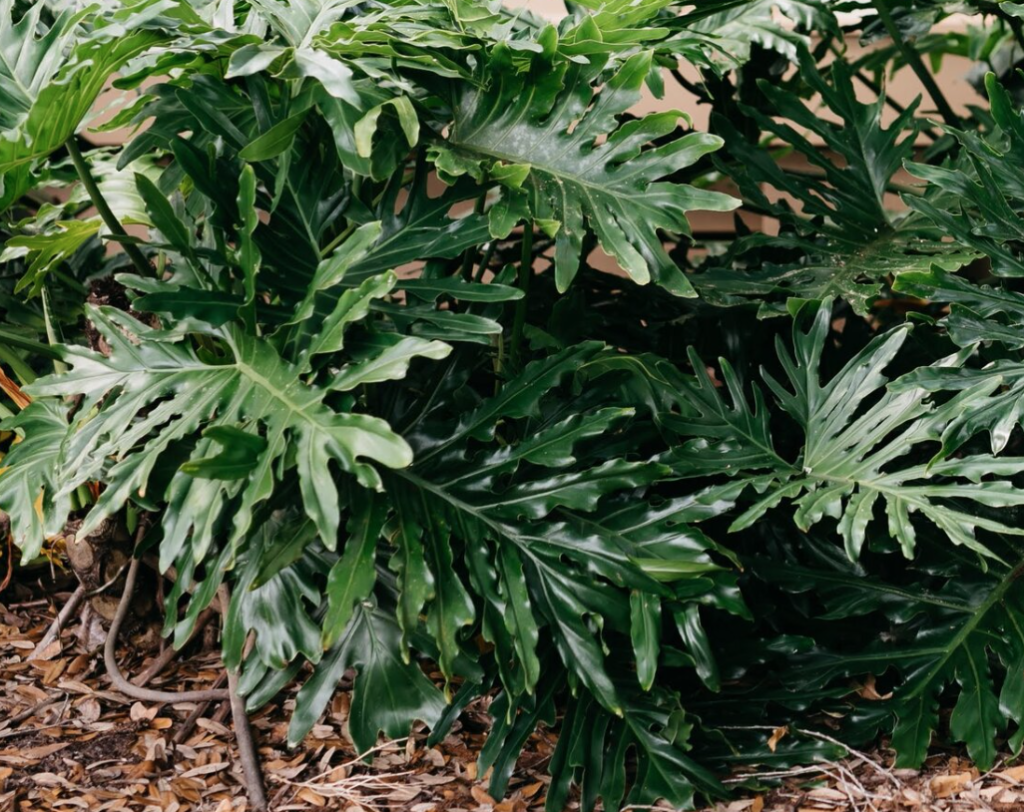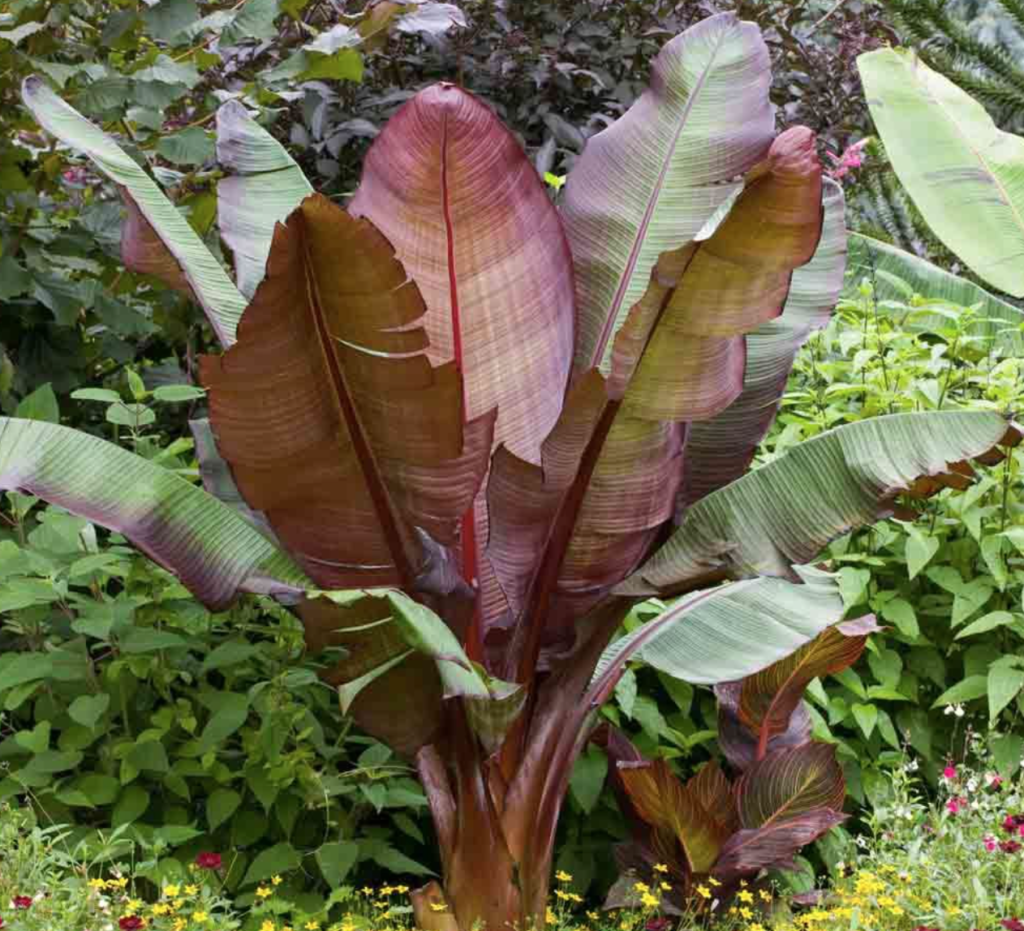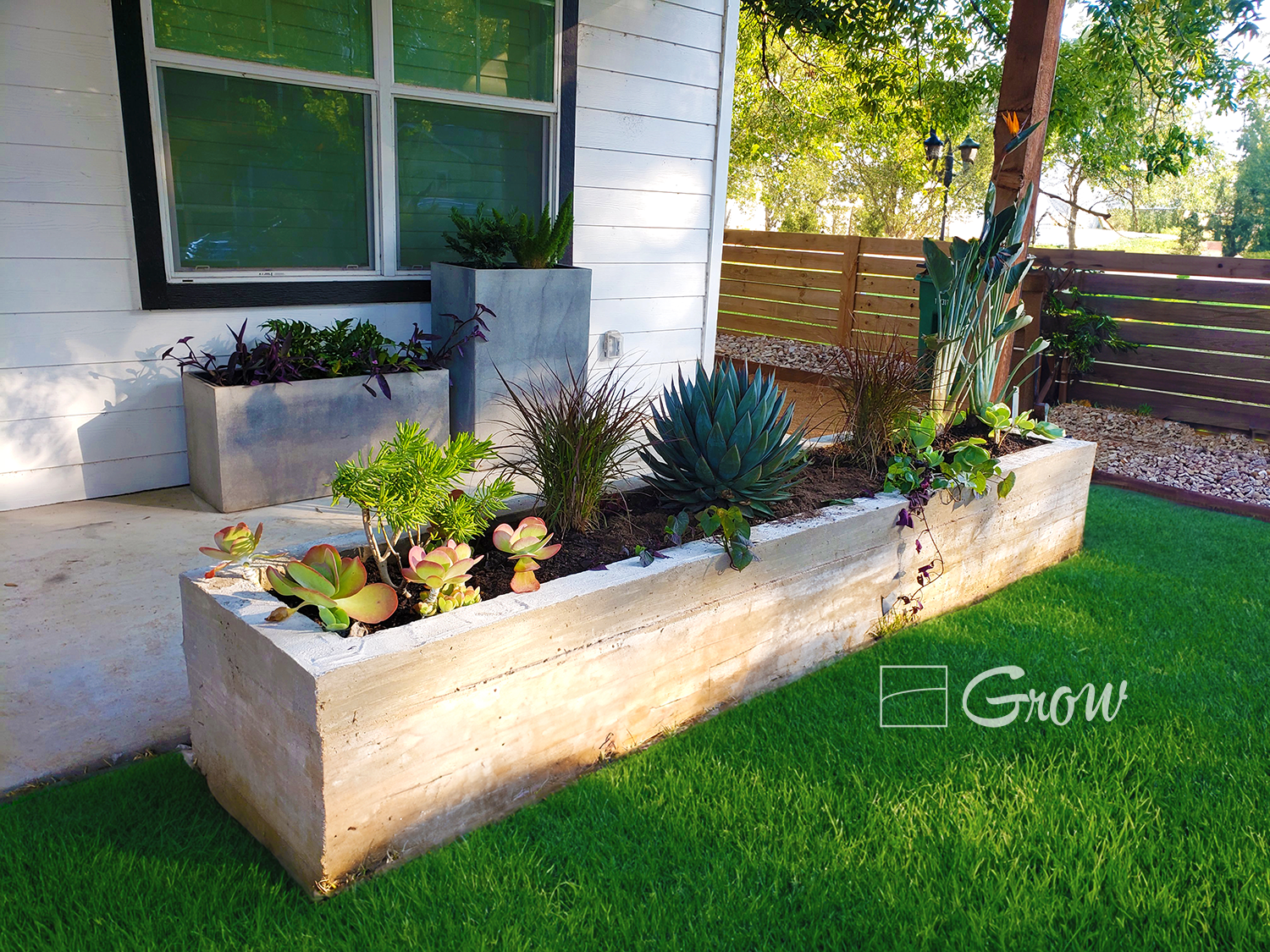
There are many different types of raised planting beds to choose from when planning your garden, but here are two (2) that you may not have considered and that we highly recommend:
- Poured concrete raised beds for the periphery of your yard.
- Composite raised beds with either medium or heavy-duty steel joining hardware.
In this article we will discuss these two premium raised bed options and explain why we recommend incorporating them into your next gardening cycle. We also include pricing charts to help you plan your purchase, including topsoil fill and/or drip irrigation.
Let’s get started!
Other Raised Beds
Even though we love traditional block masonry beds (built from limestone, brick and sandstone) and the increasingly popular steel beds, the trick is to strike a balance between longevity, cost and function. Both are elegant in design, last for years and improve curb appeal. The downside is that as features these options tend to be very expensive.
Alternatively, cheaper beds built of pine and used primarily for gardening will only last one or two seasons before rotting out. Treated lumber, though long-lasting is generally not recommended for beds containing edible vegetables as they can leach harmful chemicals into the soil.
Another factor is mobility. Often garden & flower beds, aquaponics and other specialty beds will change positions as the arrangement of your garden changes from season to season. Though not as important for the garden periphery, it is important to have a few beds that can be repositioned each season as your planting strategy grows and develops.
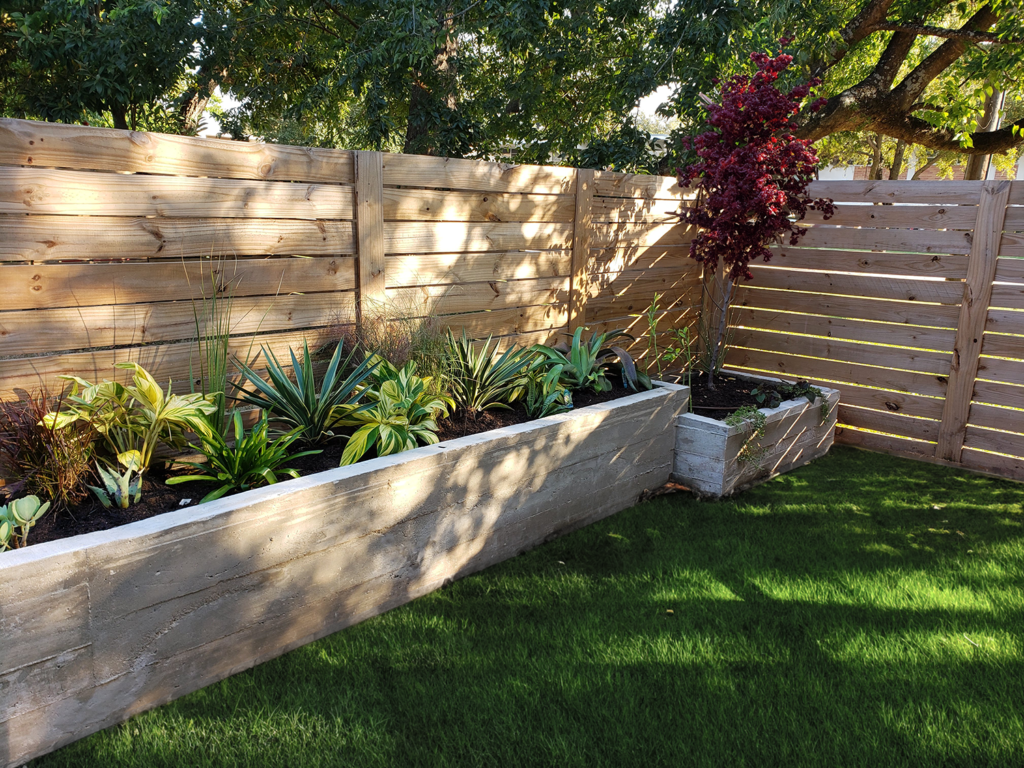
Poured Concrete Raised Beds
Poured concrete raised beds work well against the periphery of a yard. First of all because beds along the periphery are less-likely to need repositioning. Even as the landscape zones in a yard change over time, the periphery most always works well with planting beds adjacent. The plants can change over time and the plants can break up what would otherwise be a hard fence or property line. A planting bed creates the illusion of a continuing space rather than a hard stop.
Grow poured concrete raised beds have the strongest concrete footers in the industry, use more steel reinforcing rebar than our competitors and use a higher quality proprietary GFRC (glass-fiber-reinforced-concrete) mix which provides strength against shifting or cracking as well as protection from water damage.
To save costs, especially when installed along a wooden fence line, the back unseen part of the bed may use pine timber, spaced several inches off the fence line to avoid moisture damage to the fence, and creates an “infinity pool” style finish to the back side of the mulch. The timber lasts as-long or longer than both treated pine and cedar picket wood fences, so when the fence is replaced after 10-15 years, a fresh timber may be attached to the back of the bed at the same time.
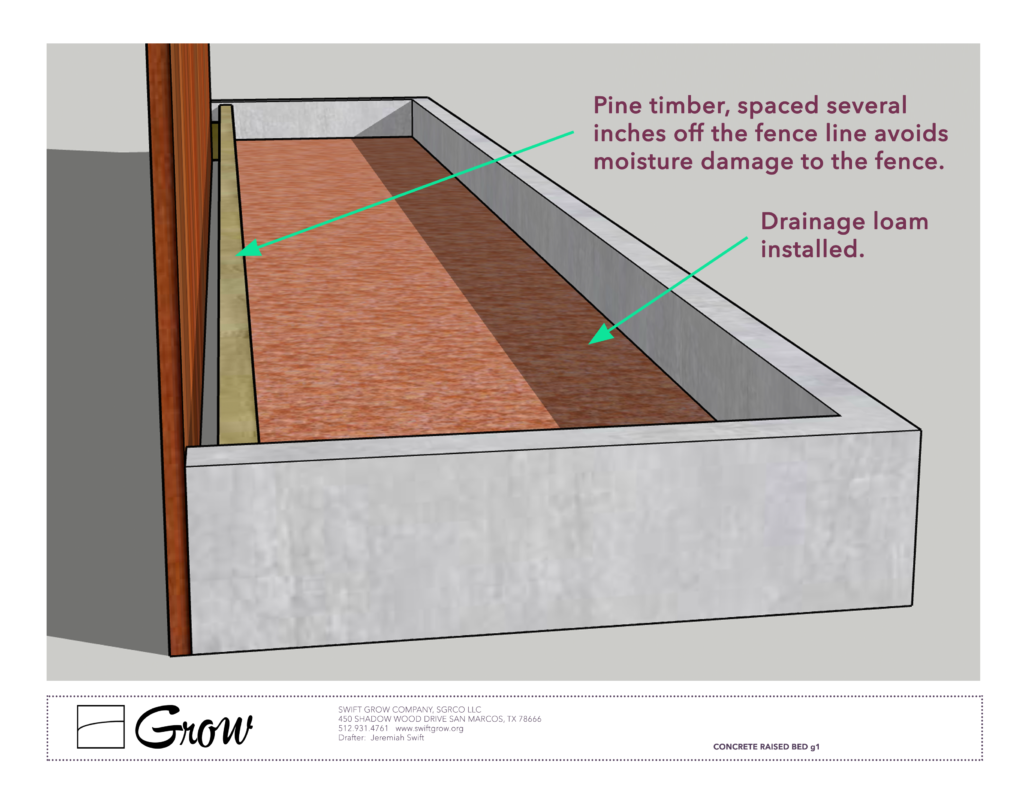
Dark flashing is installed along the pine backing to prevent falling soil or mulch from building up and rotting against the existing wood fence. The bed may then be filled with drainage loam and garden soil mix (described in more detail below). Drip irrigation sections are installed and the bed is finished with a topsoil/ mulch moisture barrier!
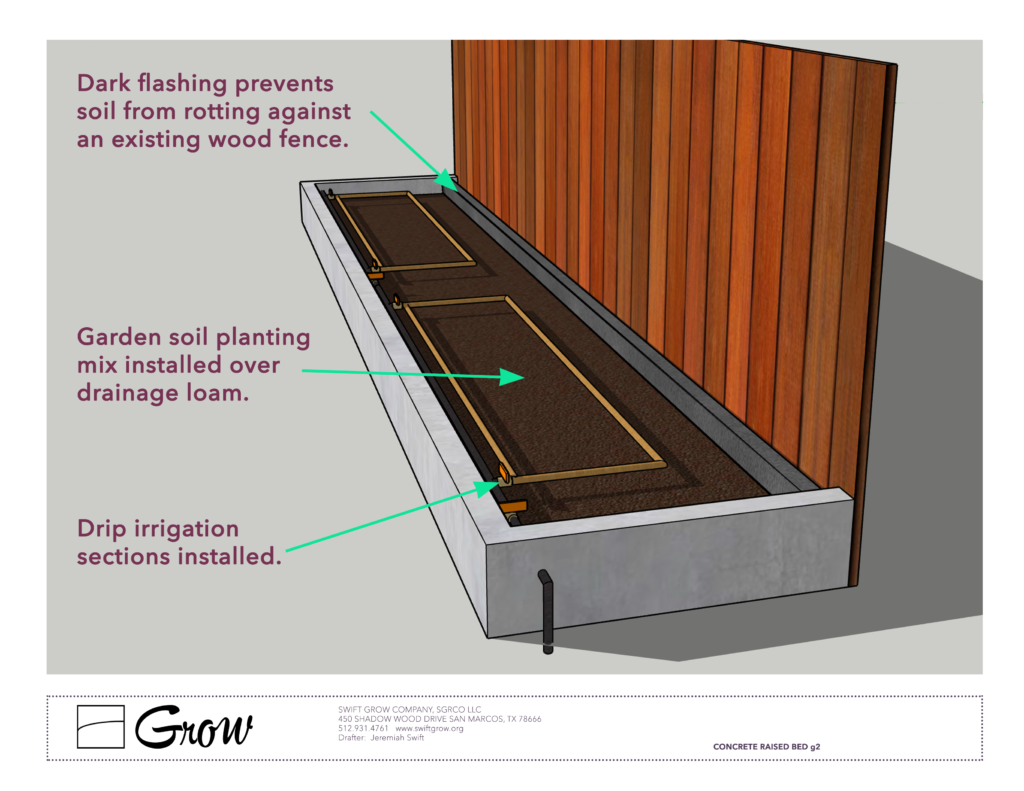
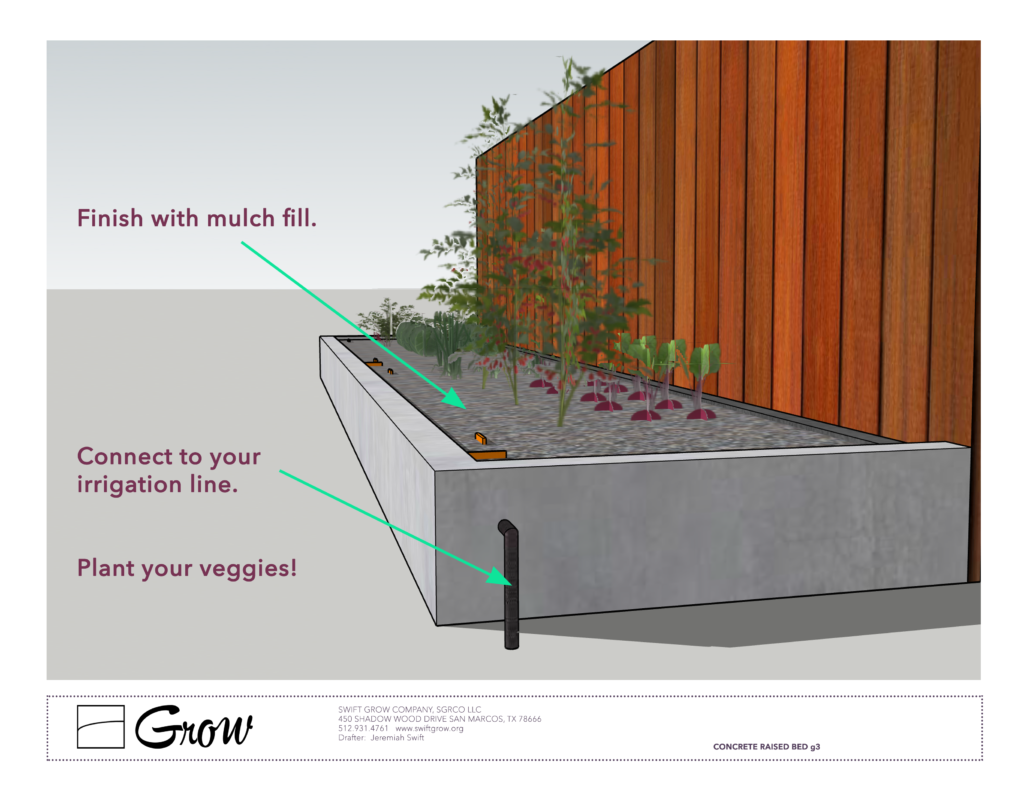
The front finished side of a concrete raised bed has a modern look, repels water & moisture and thus prevents mildew. Walls are poured from 3 to 6-inches thick depending on how much space you need to set your iced tea!
Composite Raised Beds
All of our composite raised bed options use recycled HDPE, a high-density polyethylene and glass fiber structural framing lumber that is *BPA free and safe for growing vegetables.
*BPA free: Bisphenol A, a plastic and epoxy chemical toxin that can leach into soil.
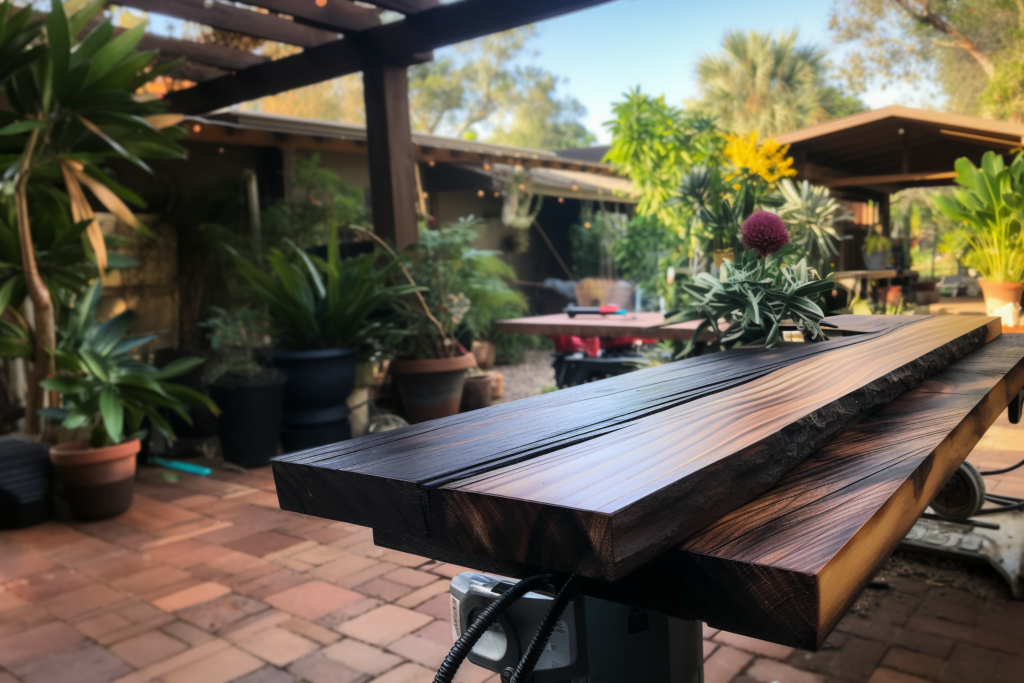
Medium-duty Steel Joining Hardware
Our medium-duty beds are assembled using 1/8-inch powder coated decorative steel joist hangers attached using rust-free hex lag screws to all four corners to maintain structural integrity for the lifetime of your bed. Every 8-foot section of bed includes a steel tie bar to keep the composite sides from bowing in any way due to soil and water pressure. Care must be taken with medium duty beds when transporting or repositioning from season to season.
The bed may then be filled with drainage loam and garden soil mix.
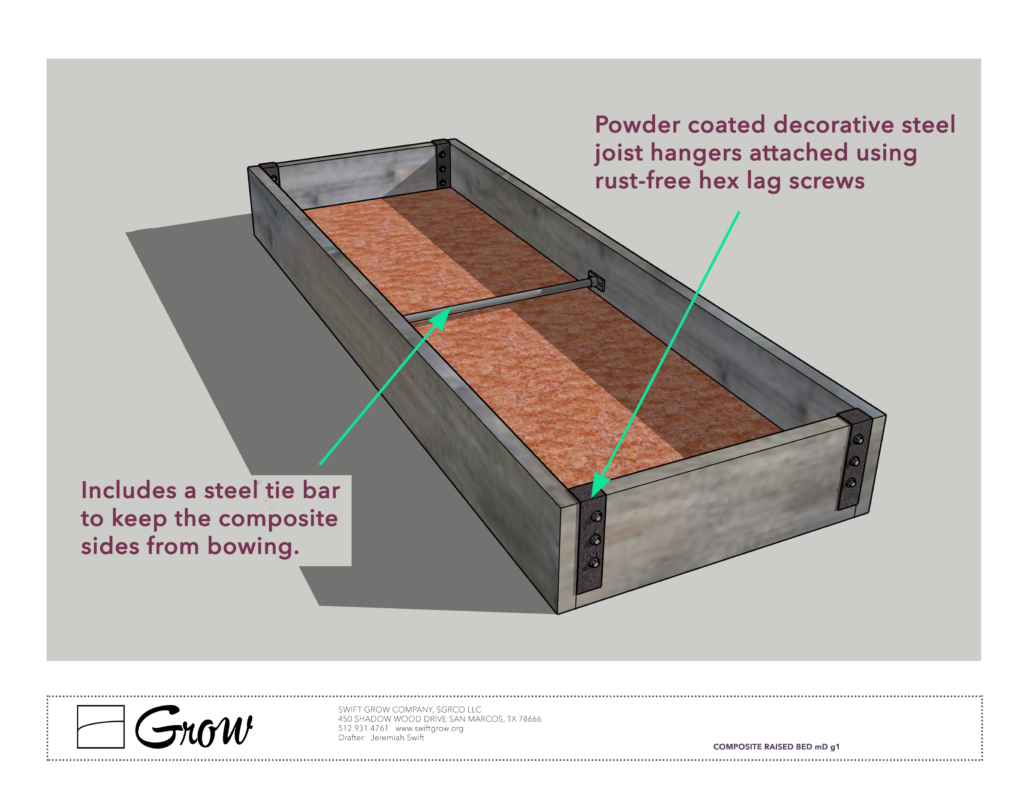
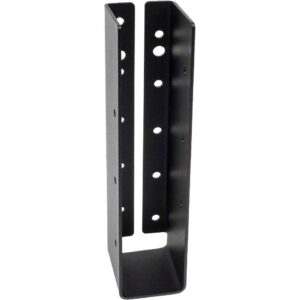
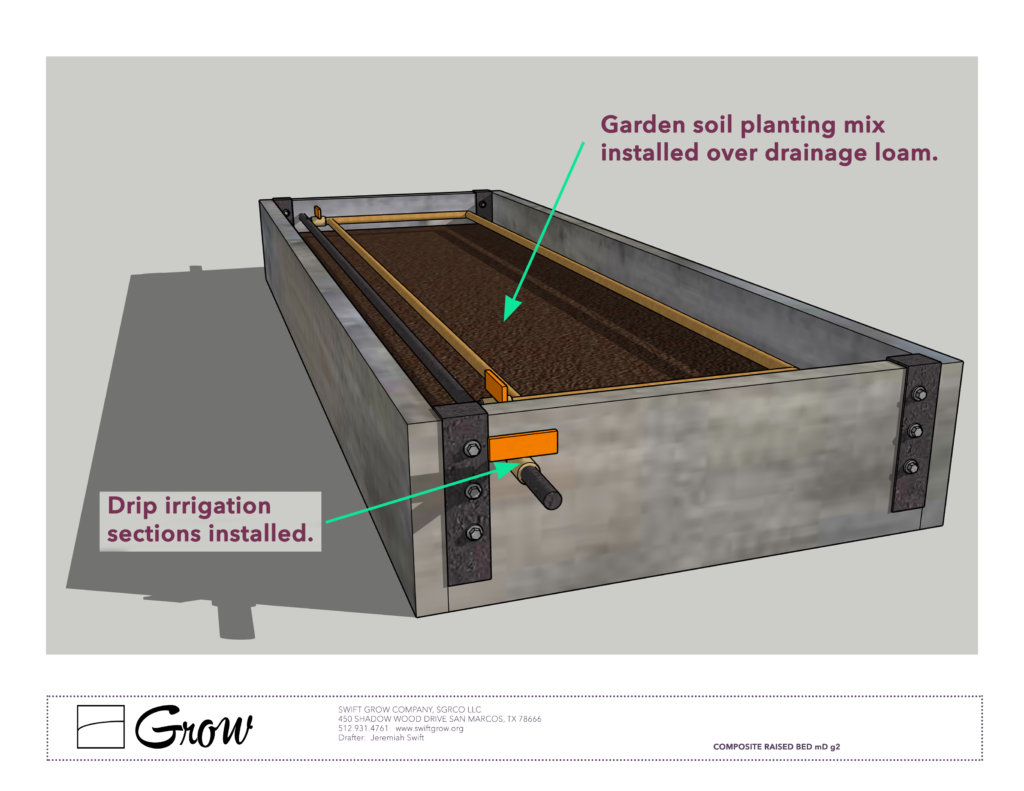
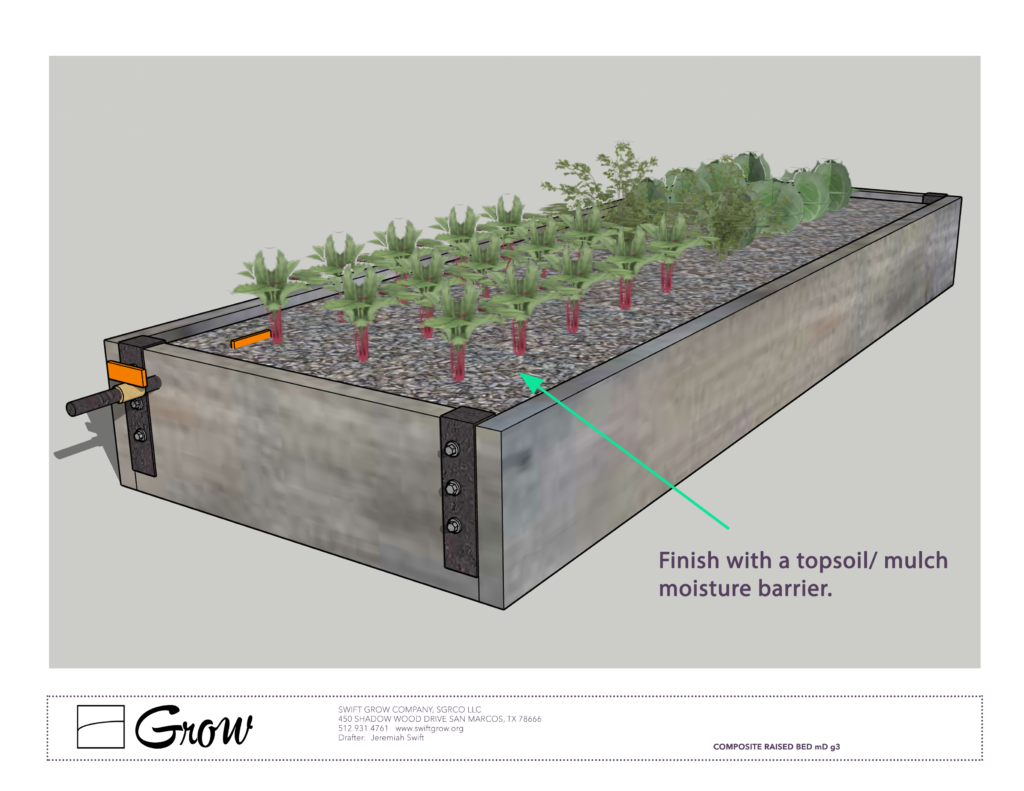
Drip irrigation sections are installed and the bed is finished with a topsoil/ mulch moisture barrier!
Heavy-duty Steel Joining Hardware
Our heavy duty hardware corners include 1/4-inch thick, 4×4-inch steel angle iron on the outside of the bed, and 1/8-inch thick, 2×2-inch steel angle iron on the inside of the bed, bound together by permanent carriage bolts and lock nut assemblies. These corners prevent any shifting or movement from occurring, even during transport.
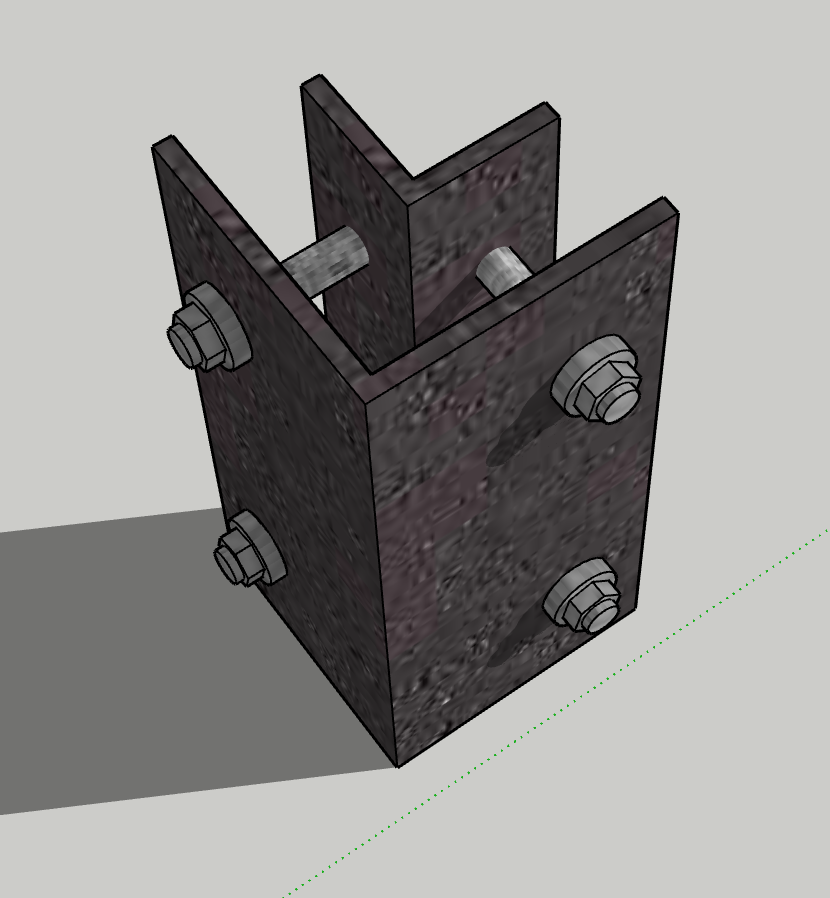
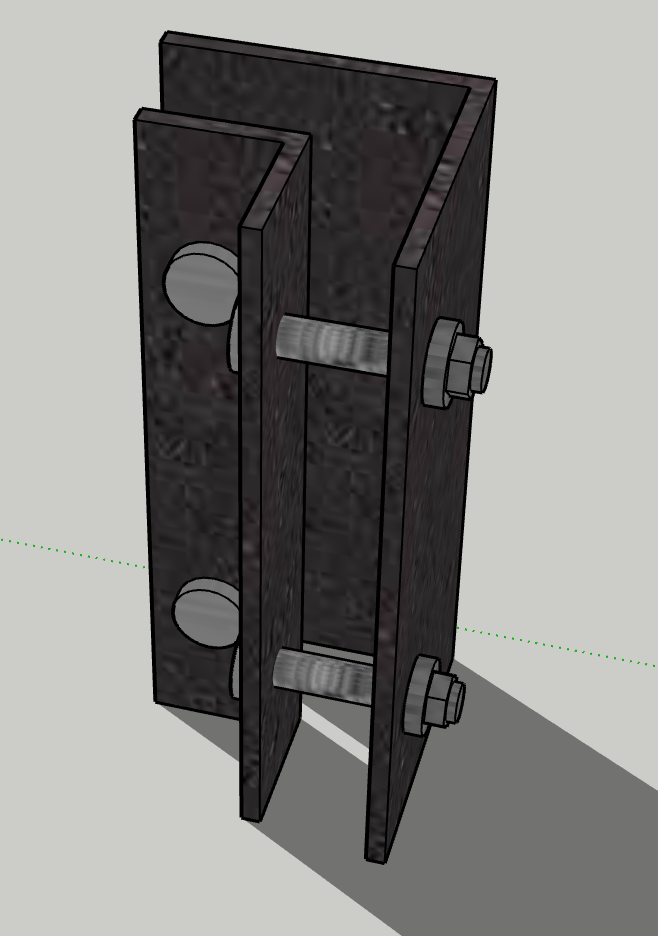
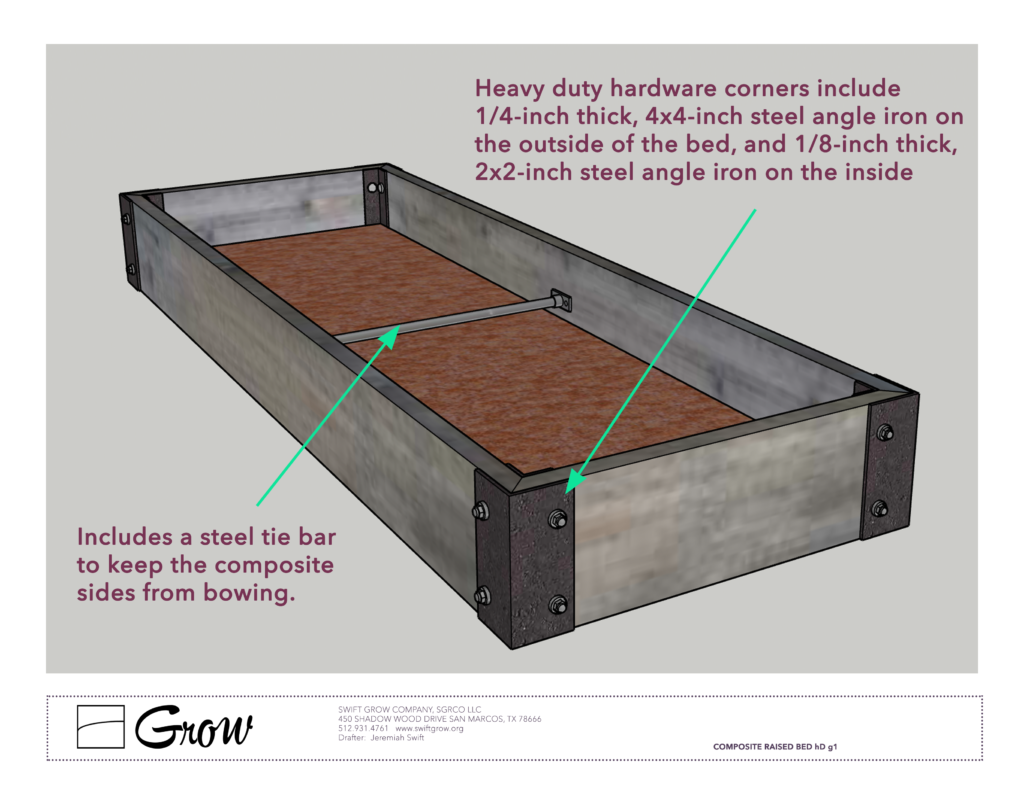
Every 8-foot section of bed includes a steel tie bar to keep the composite sides from bowing in any way due to soil and water pressure.
The bed is then filled with drainage loam and garden soil mix. Drip irrigation sections are installed and the bed is finished with a topsoil/ mulch moisture barrier.
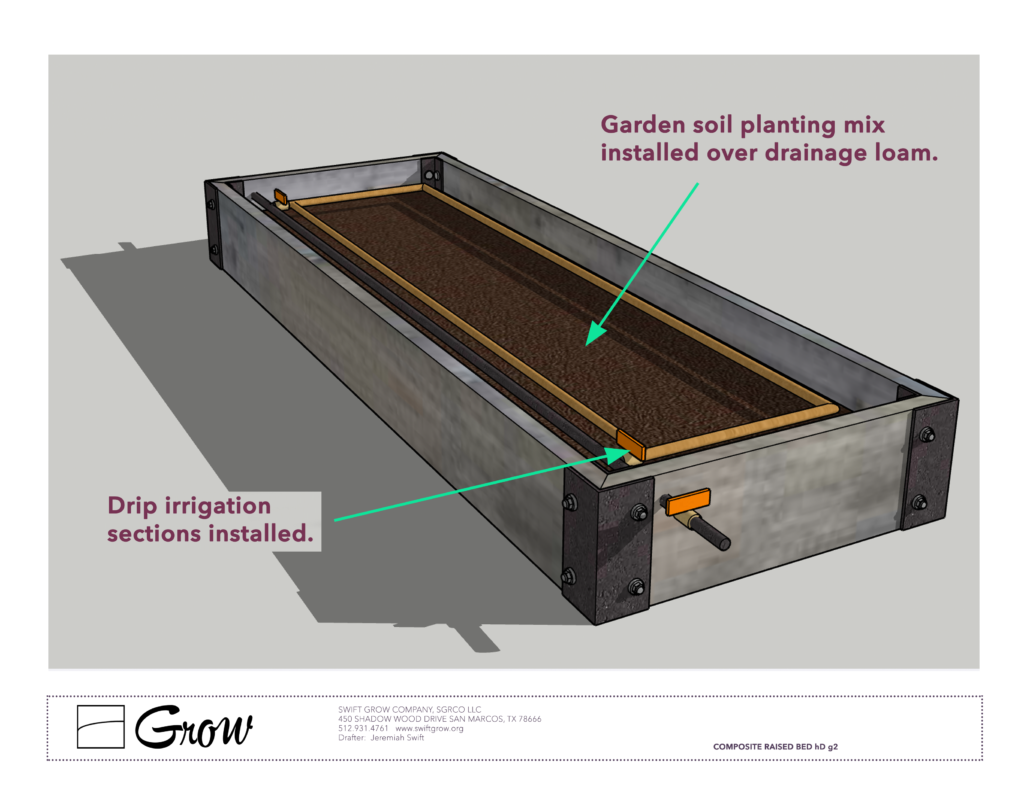
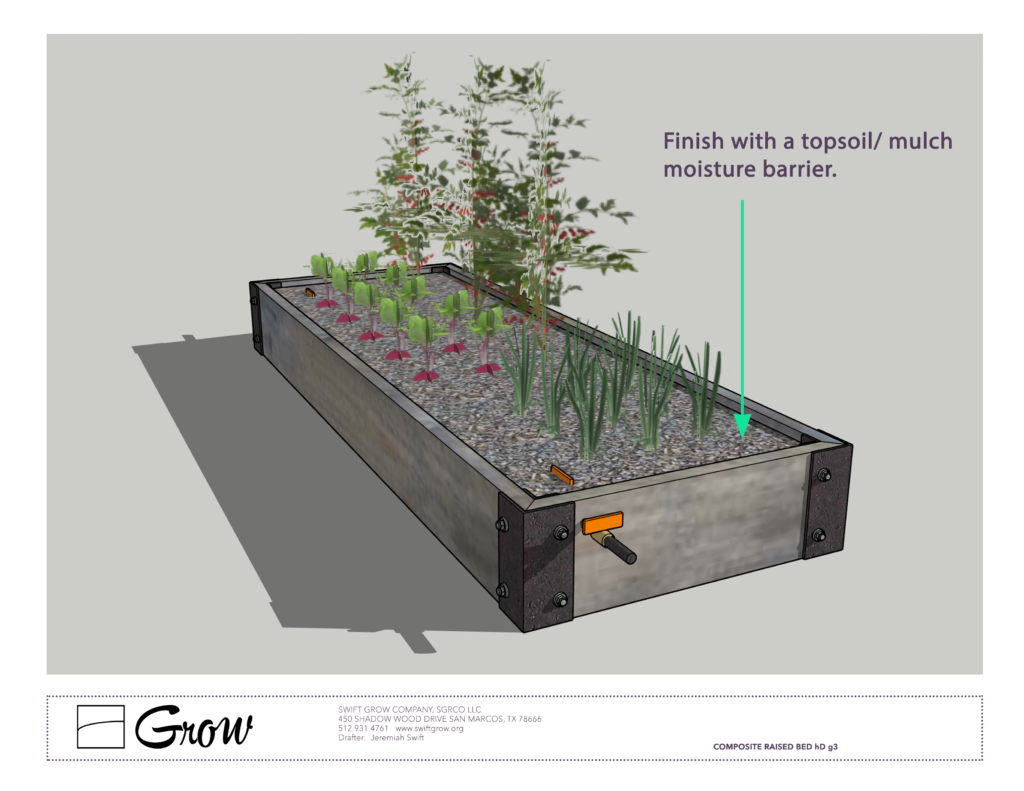
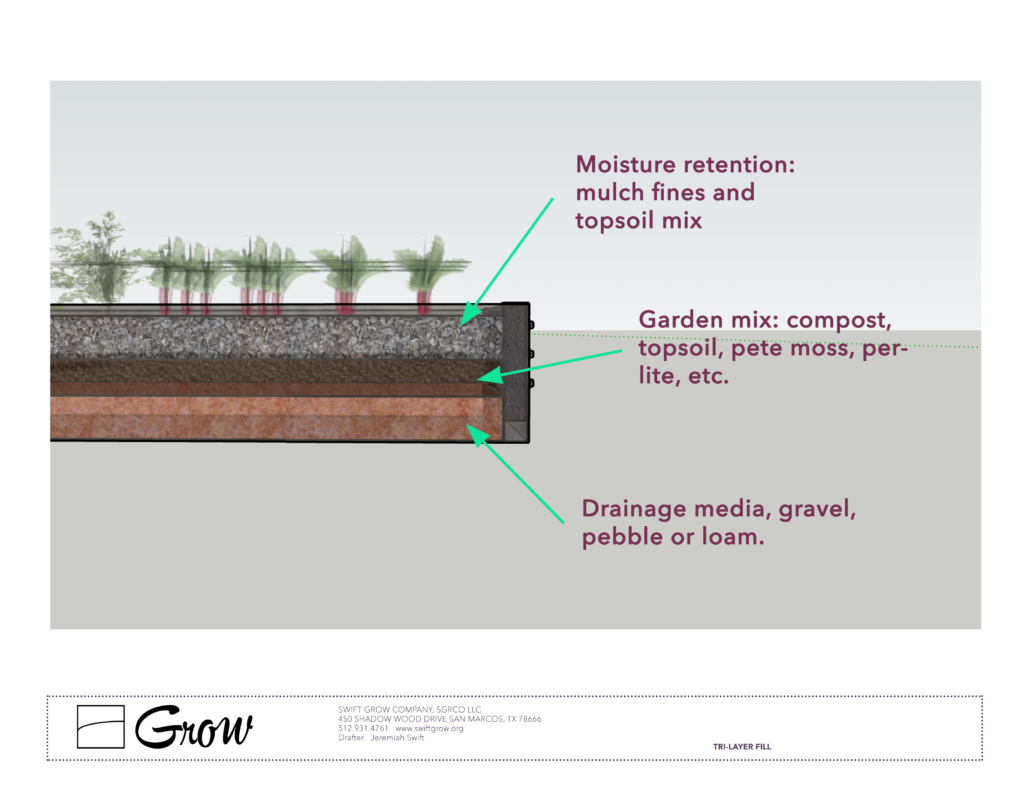
Tri-layer Fill
Filling a garden bed should include three levels of planting media for optimal growing. The bottom layer must allow for drainage. Small rock is ok, but so is sand or sandy loam. The middle layer should be your garden mix: a blend of topsoil and nitrogen-rich mature or finished compost. The top-layer is your moisture-retention layer which can include topsoil mixed with mulch-fines, dry grass or thatch.
Drip Irrigation
Our drip irrigation sections are closed loop systems which helps to even out pressure and thus water flow. They include shut-off valve pairs for unplanted sections and are modular, so that each section connects effortlessly to the adjacent section.
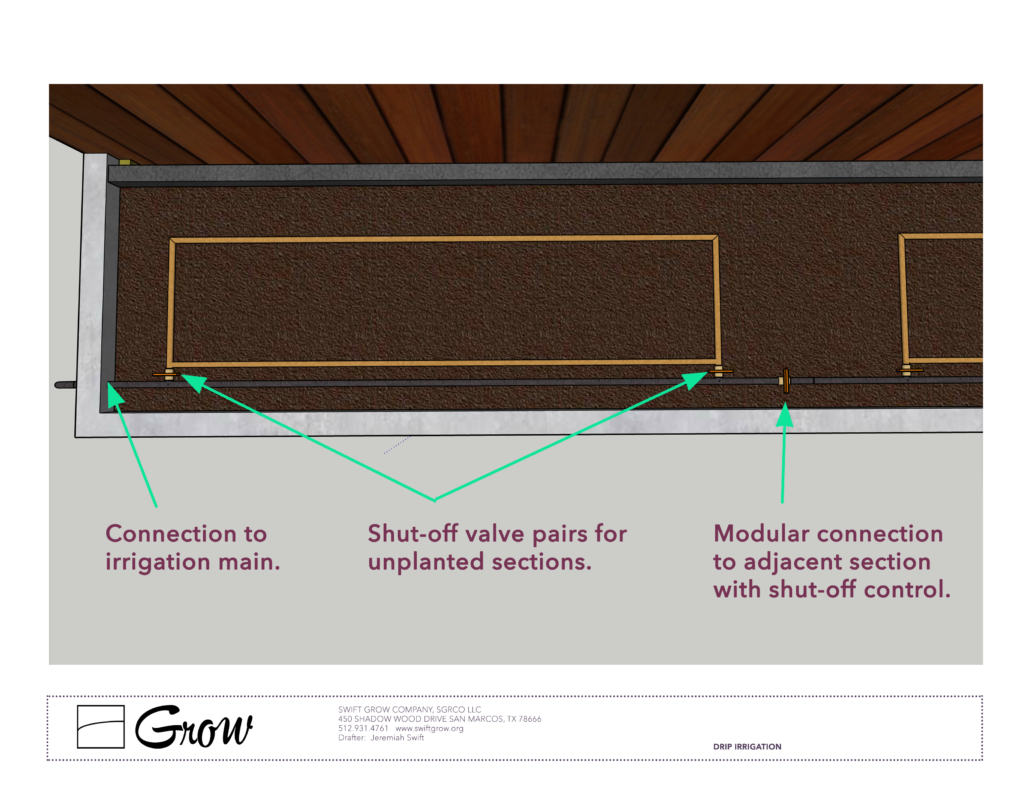
Pricing
Below are pricing charts for:
- concrete beds
- composite beds with medium-Duty hardware
- composite beds with heavy-Duty hardware.
Each bed section is based on 8 foot x 3⅛ foot raised beds (25 sq ft of planting space per bed) at 10-inches high, installed. The option for fill and/ or drip irrigation is also included.
Concrete Raised Bed: Pricing Sheet
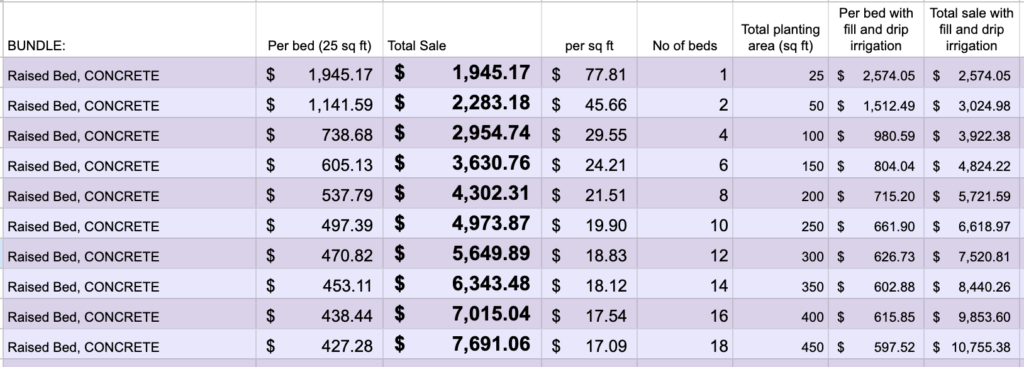
Composite Raised Bed with Medium-Duty Hardware: Pricing Sheet
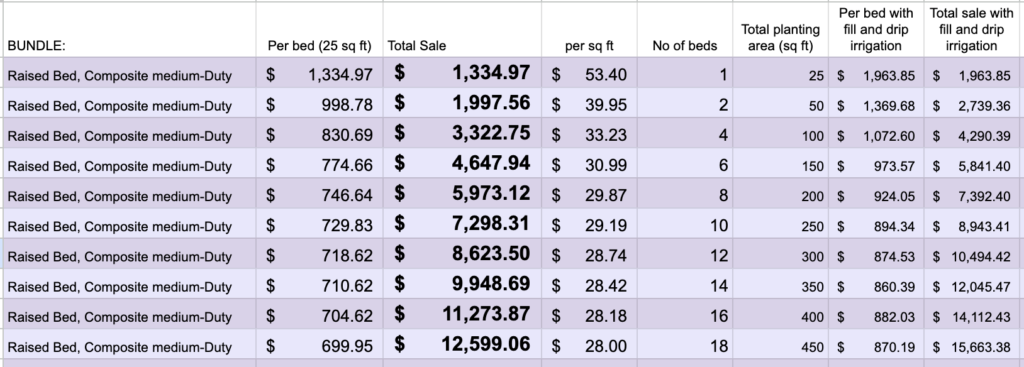
Composite Raised Bed with Heavy-Duty Hardware: Pricing Sheet
